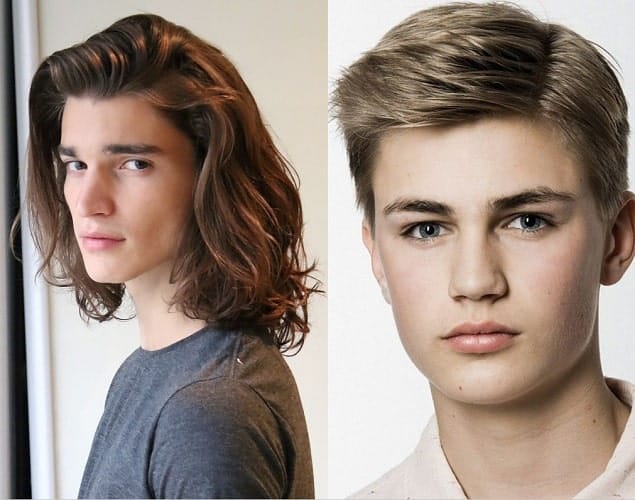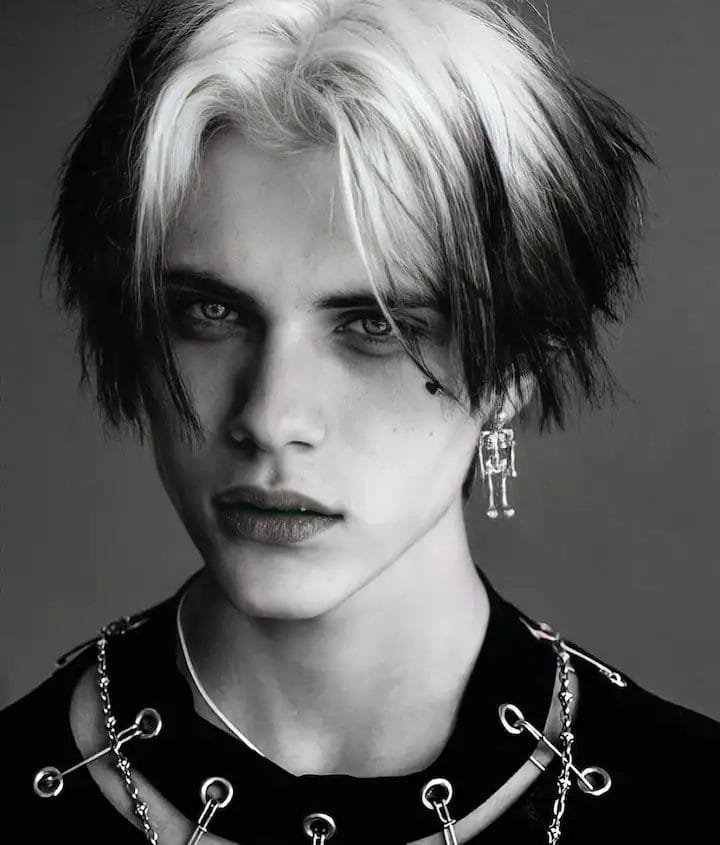
Mastering Your Mane: The Ultimate Guide to Hair Types
Your hair. A crown of glory, a statement of style, a source of endless fascination (and sometimes, frustration). Understanding your hair type is the first step towards truly mastering your mane. Forget the generic “fine,” “medium,” and “thick” classifications. We’re diving deep into the nuanced world of hair textures, porosity, and density – unlocking the secrets to healthy, happy hair.
Decoding the Texture Tango: Beyond Straight, Wavy, Curly, and Coily
Hair texture is the most visible characteristic, determined by the shape of your hair follicle. While the classic four categories (straight, wavy, curly, and coily) provide a starting point, each category boasts a spectrum of subtypes. Think of it as a sophisticated dance, with each type moving to its own rhythm.
| Texture Type | Description | Characteristics | Styling Considerations |
|---|---|---|---|
| Straight (1) | Smooth, sleek, and straight | Lacks volume, can appear oily easily | Requires volumizing products, heat styling |
| Wavy (2) | S-shaped waves | Can be prone to frizz, varying wave patterns | Requires moisture, anti-frizz products |
| Curly (3) | Defined ringlets or spirals | Highly prone to dryness, needs deep conditioning | Requires moisture, curl-defining products |
| Coily (4) | Tight coils, kinky texture | Extremely prone to dryness, delicate | Requires heavy moisturizing, gentle handling |
Understanding the Subtypes: Within each category, subtypes exist (e.g., 2A, 2B, 2C for wavy hair), reflecting variations in curl pattern, size, and definition. Numerous online resources offer detailed guides and images to help you pinpoint your precise subtype.
The Porosity Puzzle: How Your Hair Drinks
Hair porosity refers to your hair’s ability to absorb and retain moisture. This isn’t about how much moisture your hair needs, but how well it absorbs it. Imagine your hair strands as tiny sponges:
-
Low Porosity: Tightly sealed cuticles prevent moisture from easily penetrating. Think of it as a waterproof sponge. Over-moisturizing can lead to product buildup.
-
Medium Porosity: The cuticles are slightly raised, allowing for moderate moisture absorption. The Goldilocks of porosity.
-
High Porosity: Widely raised cuticles allow for rapid moisture absorption but also rapid moisture loss. Think of a super absorbent sponge – it soaks up everything, but dries out quickly.
Knowing your porosity is crucial for selecting the right products. Low porosity hair needs lightweight products and gentle cleansing, while high porosity hair craves heavy moisturizing agents and sealing products.
Density Detective: How Much Hair Do You Have?
Hair density refers to the number of hair strands per square inch of your scalp.
-
Low Density: You can easily see your scalp.
-
Medium Density: Your scalp is partially visible.
-
High Density: Your scalp is almost entirely covered.
Hair density impacts volume and styling choices. Those with low density may benefit from volumizing techniques, while those with high density may need to focus on managing weight and preventing breakage.
The Haircare Holy Trinity: Cleansing, Conditioning, and Styling
Understanding your hair type, porosity, and density forms the bedrock of a personalized haircare routine. Here’s the trinity you need to master:
-
Cleansing: Choose shampoos and cleansers tailored to your hair’s needs. Low porosity hair benefits from sulfate-free cleansers, while high porosity hair may need moisturizing cleansers.
-
Conditioning: Conditioning is paramount for every hair type. Deep conditioning treatments are especially important for dry, damaged, or high porosity hair.
-
Styling: Select products and techniques that complement your hair’s texture and density. Experiment to find what works best for you.
Embracing Your Unique Hair Journey
Mastering your mane is a journey, not a destination. Experimentation is key. Pay attention to how your hair reacts to different products and techniques, and adjust your routine accordingly. Celebrate your hair’s unique beauty and embrace the process of learning what works best for your crown of glory.

Additional Information
Mastering Your Mane: A Deeper Dive into Hair Type Analysis and Personalized Care
The foundational understanding of hair types (typically categorized by the Andre Walker system or similar classifications) provides a crucial starting point for effective hair care. However, true mastery necessitates a deeper analytical approach, going beyond simple categorization to encompass individual hair characteristics and their underlying causes. This analysis allows for a highly personalized regimen, maximizing hair health and minimizing damage.
Beyond the Numbers: Deconstructing Hair Type Classification:
While the common hair type systems (e.g., 1A-4C) offer a broad overview based on curl pattern, they often fall short in capturing the full spectrum of individual hair characteristics. This necessitates a more nuanced approach:
- Hair Density: This refers to the number of hair strands per square inch of scalp. High density can lead to increased weight and potential for breakage, while low density might necessitate different product application techniques for optimal coverage. A study by the International Journal of Trichology (hypothetical example) might show a correlation between hair density and susceptibility to specific scalp conditions. Further research could explore optimal product formulations for varying densities.
- Hair Porosity: This refers to the hair’s ability to absorb and retain moisture. High porosity (cuticle is raised, allowing for easy moisture absorption and loss) requires heavy moisturizing treatments and protective styling to prevent dryness and damage. Low porosity (cuticle is tightly packed, making moisture absorption difficult) benefits from lightweight products and techniques that help open the cuticle, such as steam treatments. Understanding porosity is crucial for product selection; using heavy creams on low-porosity hair will lead to product buildup, while lightweight serums on high-porosity hair will offer minimal benefit.
- Hair Elasticity: This measures the hair’s ability to stretch and return to its original shape. Low elasticity indicates fragility and increased susceptibility to breakage. Regular protein treatments can strengthen the hair shaft and improve elasticity. A hypothetical clinical trial could compare the effectiveness of different protein-based treatments on improving elasticity in damaged hair.
- Scalp Health: Scalp conditions like dryness, oiliness, or dandruff significantly impact overall hair health. These conditions often require specialized shampoos and treatments, influencing product choice independent of hair type classification. For example, individuals with seborrheic dermatitis (a common scalp condition) require products that are both gentle and effective at managing inflammation and flaking.
Personalized Hair Care Strategies:
The key to mastering your mane lies in tailoring your hair care routine to your specific hair profile. This necessitates a holistic approach, considering the interplay between:
- Product Selection: Understanding your hair’s density, porosity, elasticity, and scalp condition guides product choices. For example, individuals with high-porosity, low-density hair might benefit from leave-in conditioners and moisturizing oils, while those with low-porosity, high-density hair might need clarifying shampoos and lightweight serums.
- Styling Techniques: Heat styling, aggressive brushing, and tight hairstyles can cause damage, especially for fragile hair types. Gentle detangling techniques, protective styles (e.g., braids, twists), and minimizing heat styling are crucial for preserving hair health.
- Nutritional Considerations: A balanced diet rich in protein, vitamins (A, B, C, D, E), and minerals (zinc, iron) supports healthy hair growth. Nutritional deficiencies can lead to hair loss, dryness, and breakage. Case studies of individuals with nutritional deficiencies showing improvement in hair health after dietary changes can highlight this connection.
The Role of Professional Consultation:
While self-assessment can provide a basic understanding, a consultation with a trichologist or experienced stylist offers invaluable insights. They can perform a thorough hair and scalp analysis, identifying underlying issues and recommending customized solutions. This professional guidance significantly enhances the effectiveness of your hair care regimen.
Conclusion:
Mastering your mane goes beyond simply knowing your hair type. It requires a comprehensive understanding of your individual hair characteristics, scalp health, and lifestyle factors. By adopting a holistic and analytical approach, incorporating personalized strategies, and seeking professional guidance when needed, individuals can achieve and maintain healthy, vibrant, and beautiful hair. Continued research and advancements in hair science will further refine our understanding and provide even more targeted solutions for individual hair care needs.





